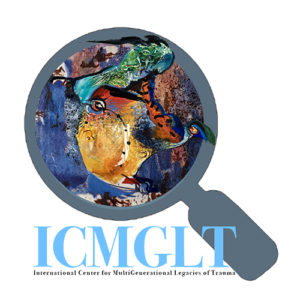Lawmakers in the nation’s capital have an opportunity to fix a longstanding problem with the landmark legislation to prevent domestic violence: its failure to protect Indigenous women.
The 1994 Violence Against Women Act, or what is commonly called “VAWA,” was the first federal law criminalizing domestic violence. VAWA aimed to protect women by making battering a federal crime, allocating federal funding for both sexual assault and domestic violence prevention and services, and requiring states to enforce all legal orders of protection.
But VAWA’s provisions have not adequately shielded Indigenous women, who experience higher rates of sexual assault, domestic violence, intimate partner violence and stalking compared to women of other racial and ethnic identities. They also suffer injuries at the hands of their rapists that require medical caremore than non-Indigenous women.
Indigenous women were not specifically named in VAWA until its 2005 reauthorization. The 2005 reauthorization included funding for tribal governments to serve victims of violence and provided access to national criminal justice data for tribal law enforcement agencies. It also mandated that research on violence against Indigenous women be undertaken.
Even after VAWA 2005, tribes were unable to prosecute most cases of violence against Indigenous women on Indian reservations – and few of those cases were prosecuted by the federal government. It wasn’t until the 2013 VAWA reauthorization that restrictions on tribal authority to prosecute some violence against Indigenous women on Indian reservations were repealed, though some of these restrictions still exist today.
Now, the U.S. Senate is about to consider another reauthorization of VAWA, HR 1620, which has already been passed by the House of Representatives. Lawmakers have the opportunity to address this longstanding inequity.
Colonization bred violence
According to U.S. Census estimates, the majority of people living on Indian reservations are not American Indian or Alaska Native. Further, most violence perpetrated against Indigenous women is committed by non-Indigenous men.
Violence against Indigenous women can be largely attributed to the longstanding effects of colonization – the elimination and destruction of a society, including their beliefs, values, culture, norms and traditions – by European settlers.
Indigenous legal scholar Sarah Deer explains that violence, and specifically rape, was used by colonizers to conquer and control Indigenous women and disconnect them from their land and bodies.
Indigenous social work scholar Hilary Weaver further describes how colonization also bred stereotypes regarding Indigenous people, insinuating that they are less than human and savages, and that Indigenous women specifically do not deserve protection from violence.
Taking away power to protect
Over the past 150 years, the federal government has drastically reduced tribal sovereignty and the power of tribal courts to prosecute crimes that happen on Indian reservations.
In 1885, Congress passed The Major Crimes Act, imposing the federal criminal justice system on tribal nations. With this legislation, the U.S. federal government asserted jurisdiction over “major crimes” such as rape and homicide occurring on the approximately 56.2 million square miles of Indian reservations in the U.S.
Then, in 1978, the Supreme Court ruling in Oliphant v. Suquamish further limited the sovereignty of tribal nations. The U.S. government, the court ruled, would have jurisdiction over all offenses committed by non-Indigenous perpetrators on Indian reservations, including cases where the victim is Indigenous.
Criminal jurisdiction on Indian reservations is also complicated by Public Law 280 from 1953, which returned jurisdiction of crimes committed on Indian reservations in six states, not to the tribes, but to the state where the Indian reservation is located.
Thus, in those six states – Alaska, California, Minnesota, Nebraska, Oregon and Wisconsin – the state has jurisdiction over crimes committed on the Indian reservation. Sarah Deer notes that the federal government did not provide those states with any additional funding to expand their criminal justice authority to Indian reservations.




